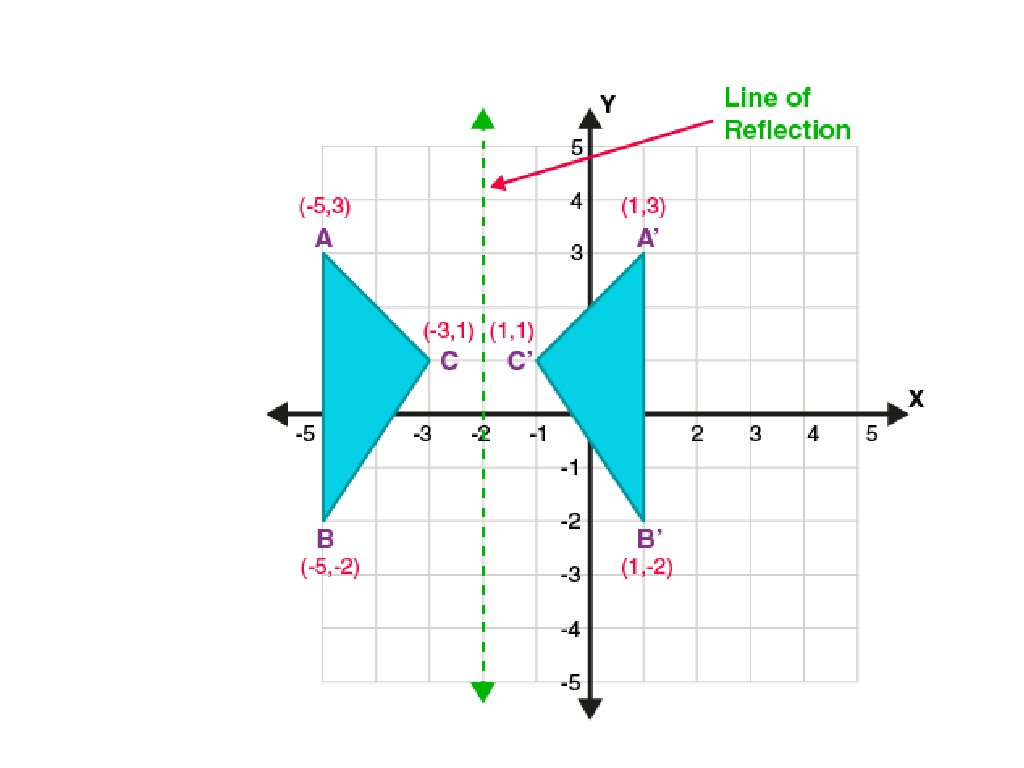Write Variable Expressions: One Operation
Subject: Math
Grade: Eighth grade
Topic: Expressions
Please LOG IN to download the presentation. Access is available to registered users only.
View More Content
Introduction to Variable Expressions
– Understanding algebra’s language
– Algebra uses symbols to represent numbers in equations and expressions.
– Defining variable expressions
– Variable expressions combine numbers and variables with operations like addition or subtraction.
– Significance in mathematics
– They are essential for solving equations and modeling real-world situations.
– Practical applications
– Examples include calculating total cost, distance over time, or savings.
|
This slide introduces the concept of variable expressions, a fundamental component of algebra. Start by explaining that algebra is like a language with its own rules, where letters often represent numbers. Variable expressions are combinations of numbers, variables, and operations that represent a particular value. Emphasize the importance of understanding variable expressions as they are used to solve problems in various areas of mathematics and are applicable in real-life scenarios. Provide examples to illustrate how variable expressions can model everyday situations, such as determining the total cost of items or the distance traveled over a period of time. Encourage students to think of other examples where variable expressions might be used.
Variables and Constants in Expressions
– Define variables and constants
– Variables represent unknowns, constants have fixed values.
– Variables in algebraic expressions
– Variables are symbols like x, y used to represent numbers in equations.
– Constants anchor expressions
– Unlike variables, constants do not change their value in an expression.
– Examples in variable expressions
– For instance, in 3x + 4, x is variable, and 4 is a constant.
|
This slide introduces the fundamental concepts of variables and constants, which are the building blocks of algebraic expressions. Variables are symbols that stand in for unknown values and can change, while constants are fixed numbers that remain the same throughout the expression. Provide examples of variables in simple algebraic expressions and explain how constants contribute to the stability of these expressions. Encourage students to identify variables and constants in different algebraic expressions and understand their roles. This understanding is crucial for writing and solving algebraic equations and will be applied in subsequent lessons on variable expressions.
Writing Variable Expressions: Basic Operations
– Review basic math operations
– Addition, subtraction, multiplication, and division
– Learn operation symbols
– Symbols: + for add, – for subtract, × for multiply, ÷ for divide
– Apply operations in expressions
– Combine variables and numbers using operations, e.g., 3a, b – 4
|
This slide is aimed at reinforcing the understanding of the four basic operations in mathematics: addition, subtraction, multiplication, and division. Students should be familiar with the symbols for each operation and how they are used to form expressions. Emphasize the importance of knowing how to apply these operations when working with variable expressions. Provide examples of simple expressions using variables and constants, and demonstrate how to combine them using the basic operations. Encourage students to practice writing their own expressions, ensuring they understand the concept of using operations to represent real-world situations mathematically.
Writing Variable Expressions: One Operation
– Combine variables and numbers
– Variables like ‘x’ can be combined with numbers to form expressions, e.g., x + 5
– Create expressions with addition
– Use ‘+’ to show increase or total, e.g., x + 3 for 3 more than x
– Form expressions with subtraction
– Use ‘-‘ to indicate decrease or difference, e.g., x – 2 for 2 less than x
– Construct expressions with multiplication
– Use ‘*’ for repeated addition, e.g., 4x means 4 times x
– Develop expressions with division
– Use ‘/’ to divide a quantity, e.g., x/5 means x divided by 5
|
This slide introduces students to the concept of writing variable expressions with one operation. Start by explaining how variables can represent unknown numbers and can be combined with known numbers to form expressions. Show how addition in expressions can represent a total or an increase, while subtraction can represent a decrease or a difference. Multiplication can be introduced as a shortcut for repeated addition, and division as a method for evenly distributing or partitioning a quantity. Provide examples for each operation and encourage students to create their own expressions using different operations. This will help them understand the use of variables in expressions and prepare them for solving equations.
Writing Variable Expressions: One Operation
– Addition expression: x + 5
– Represents a value increased by 5
– Subtraction expression: y – 3
– Represents a value decreased by 3
– Multiplication expression: 4z
– Indicates 4 times a variable z
– Division expression: w / 2
– Shows variable w halved
|
This slide introduces students to the concept of writing variable expressions with one operation. Start by explaining that a variable can represent an unknown value and how we can perform operations on these variables just like with numbers. For addition, use ‘x + 5’ to show adding 5 to an unknown number. For subtraction, ‘y – 3’ demonstrates taking away 3 from an unknown number. Multiplication is shown with ‘4z’, which means 4 times the unknown number z. Lastly, ‘w / 2’ illustrates division, where the unknown number w is divided by 2. Encourage students to create their own examples and to understand how these expressions can be used to solve real-world problems.
Practice Problems: Writing Variable Expressions
– Expression for ‘5 more than a number’
– If ‘x’ represents the number, the expression is ‘x + 5’
– Expression for ‘3 less than a number’
– For a number ‘x’, the expression is ‘x – 3’
– Expression for ‘a number multiplied by 7’
– The expression is ‘7 * x’ where ‘x’ is the number
– Expression for ‘a number divided by 8’
– Written as ‘x / 8’ with ‘x’ being the number
|
This slide provides practice problems for students to apply their understanding of writing variable expressions with one operation. Encourage students to use a variable, like ‘x’, to represent the unknown number and then apply the appropriate operation. For example, ‘5 more than a number’ translates to ‘x + 5’. It’s crucial to reinforce the concept that expressions can represent numbers in terms of variables and operations. During the class, work through each problem step-by-step and discuss any common mistakes. Provide additional examples if needed and ensure students are comfortable with the concept before moving on.
Class Activity: Crafting Variable Expressions
– Pair up and write expressions
– Create 5 unique expressions each
– Expressions should include one operation like +, -, *, or /
– Use a variety of operations
– Ensure each expression uses a different operation
– Explain expressions to your partner
– Share the reasoning behind your choices
|
This activity is designed to reinforce students’ understanding of writing variable expressions with one operation. Students will pair up to create a total of 10 expressions (5 each) using addition, subtraction, multiplication, and division. Each expression should be unique and incorporate different numbers and variables. After writing their expressions, students will take turns explaining to their partner how they constructed each expression and the operation used. For the teacher: Circulate the room to assist pairs as needed. Encourage creativity and challenge students to think of real-life scenarios where their expressions could be applied. Possible activities could include creating expressions that calculate the total cost of items, distances traveled, or savings over time. This will help students see the practical application of variable expressions in everyday life.
Review and Q&A: Variable Expressions
– Recap today’s variable expressions
– Invite student questions
– What did you find interesting or challenging?
– Address doubts and confusions
– Clarify specific steps in forming expressions
– Summarize key takeaways
|
This slide is aimed at reinforcing the day’s lesson on writing variable expressions with one operation. Begin by summarizing the main points covered, such as defining variables, understanding operations, and constructing expressions. Open the floor to students, encouraging them to ask questions about parts of the lesson they found intriguing or difficult. Address any misunderstandings directly, ensuring that each student leaves with a clear understanding of the material. Conclude by summarizing the key concepts to solidify the learning objectives. This interactive session will help assess student comprehension and provide immediate feedback.
Homework: Crafting Variable Expressions
– Create 10 variable expressions
– Use only one operation in each
– Operations include addition, subtraction, multiplication, or division
– Include 2 expressions per operation
– Share your expressions next class
– Be prepared to explain how you created them
|
This homework assignment is designed to reinforce students’ understanding of variable expressions with one operation. Students are expected to create a total of 10 different expressions, ensuring they use each of the four basic arithmetic operations (addition, subtraction, multiplication, division) at least twice. This will help them practice and demonstrate their ability to write and understand mathematical expressions involving variables. In the next class, students will share their expressions, providing an opportunity for peer learning and for the teacher to assess understanding. Encourage creativity and remind students to check their work for accuracy.





